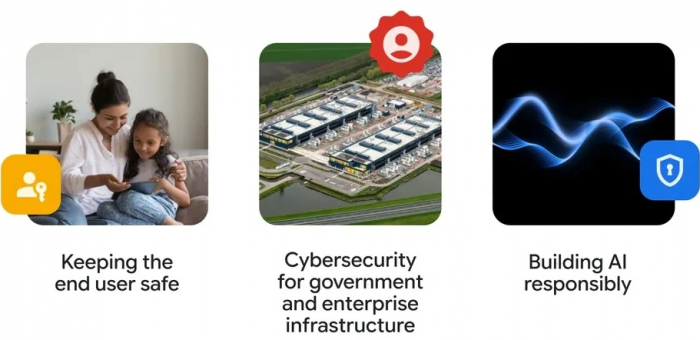Artificial Intelligence
4 min read
Google’s Safety Charter Sets New Benchmark for Securing India’s AI Future


As India accelerates into an AI-powered digital future, the risks are evolving just as fast. On June 17, Google raised the alarm—and the standard—by unveiling its Safety Charter at the ‘Safer with Google India Summit’ in New Delhi. The initiative is more than a tech upgrade; it’s a nationwide strategy to combat rising online fraud, deepen cybersecurity, and embed responsible AI practices across the ecosystem.
Google’s approach is rooted in three core areas:
Shielding users from cybercrime: With UPI-related fraud surging 85% in 2024 and ₹1,087 crore in losses recorded, Google’s proactive defense has never been more urgent. Its DigiKavach system has already delivered AI-powered alerts to over 177 million users.
Securing enterprises and public systems: From Gmail’s on-device spam filters to enterprise-grade protection for apps and infrastructure, Google is helping India’s digital institutions stay ahead of evolving cyber threats.
Embedding ethical AI: Using watermarking (via SynthID), fact-verification tools, and red-teaming practices, Google is ensuring that its AI systems remain safe, transparent, and aligned with Indian users across 29 Indic languages.
_1750484704.png)
In the last year alone:
Google Play Protect blocked nearly 60 million dangerous app installs.
Google Pay flagged 41 million suspicious transactions, preventing fraud worth ₹13,000 crore.
Gmail and Google Messages intercepted hundreds of millions of scam messages using on-device AI.
Scam impersonations on government platforms dropped by 80%, and customer service fraud by 70%.
These aren’t projections—they’re already in motion, showing the operational reach of AI as a guardian for India’s 800M+ internet users.
To convert its policy into practice, Google has launched the Google Safety Engineering Centre (GSEC) in Hyderabad. This is its fourth global GSEC (after Munich, Dublin, and Malaga) and the first in the Asia-Pacific. Built in partnership with the Telangana government, this centre will serve as the command hub for technical innovation, localised safety measures, and India-specific AI tools.
Beyond tools and platforms, Google is investing in people. A $20 million grant via Google.org to The Asia Foundation will fund 10+ new cyberclinics across the region. At home, collaborations with IIT-Madras on post-quantum cryptography, along with partnerships with Indian universities, are helping train students, startups, and MSMEs on safe digital practices.
According to Google’s VP of Security Engineering, Heather Adkins, India offers a unique window into global threat evolution. The scale, diversity, and rapid digitisation of the Indian market allow early detection of scam trends and cyberattack vectors—often before they show up elsewhere. What Google learns in India may define how it protects users worldwide.
At the heart of this initiative is the principle that trust is infrastructure. As AI becomes deeply integrated into daily life—from banking to healthcare to content creation—Google’s systems are being designed not just to react to threats, but to anticipate and neutralise them.
This is a shift from reactive safety to proactive governance. In a digital economy increasingly shaped by machine intelligence, Google’s charter sends a clear message: innovation without security is not progress.
India’s digital journey is undeniably exciting, but with that rapid growth comes the need for strong safeguards. From my perspective, Google’s Safety Charter isn’t just about reacting to threats—it’s about proactively building trust. By combining advanced AI with local insights and partnering with key institutions, Google is setting up a robust defense system. As India gets ready to welcome its next billion users, I believe Google is not only securing the future but also ensuring it’s a future built on security from the ground up.
Be the first to post comment!